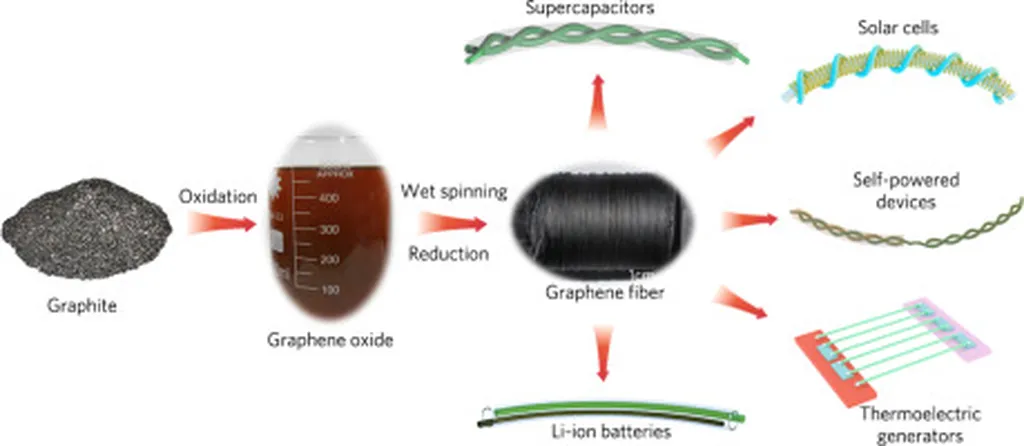In the quest to bolster the performance of natural fiber composites, researchers have turned to an unconventional source: the short fibers of Ampelodesmos mauritanicus, commonly known as Diss. A recent study published in *Materials Research* has unveiled promising advancements in functionalizing these fibers with graphene nanoplatelets (GNPs), potentially opening new avenues for the energy sector.
Lead author Hakim Gouigah, affiliated with an undisclosed institution, and his team set out to explore the structural, thermal, and morphological enhancements of short Diss fibers (SDF) when combined with GNPs. The process involved alkali treatment of the fibers and sonication of the graphene nanoplatelets, followed by a simple mixing method to create a functionalized composite.
The results were striking. Electron microscope images confirmed strong adhesion of graphene to the fiber surface, a critical factor in enhancing composite performance. “The adhesion was so robust that it significantly improved the thermal stability of the fibers,” Gouigah explained. The maximum decomposition temperature (Tmax) of the fibers increased from 343 °C to 353 °C, indicating a marked enhancement in thermal resistance. Additionally, there was a notable 70.25% reduction in final accumulated weight loss, suggesting that the functionalized fibers could withstand more extreme conditions.
Spectroscopic analysis revealed another intriguing finding: the absence of chemical bonding between the fibers and the graphene nanoplatelets. This supports the hypothesis that the graphene mechanically adheres to the fiber surface, a discovery that could simplify the manufacturing process and reduce costs.
The implications for the energy sector are substantial. Natural fibers like Diss are renewable, biodegradable, and lightweight, making them ideal for applications where sustainability is a priority. The enhanced thermal stability and mechanical adhesion observed in this study could make these composites more durable and reliable in high-temperature environments, such as in the production of wind turbine blades or other energy infrastructure components.
Gouigah’s research, published in *Materials Research* (translated to English as “Materials Research”), highlights the potential for natural fibers to play a more significant role in advanced applications. As the energy sector continues to seek sustainable and high-performance materials, the functionalization of Diss fibers with graphene nanoplatelets could be a game-changer.
This study not only sheds light on the potential of natural fibers but also underscores the importance of understanding interfacial interactions in composite materials. As Gouigah noted, “The key to enhancing composite performance lies in optimizing these interactions.” With further research and development, the functionalized Diss fibers could pave the way for more innovative and sustainable solutions in the energy sector and beyond.

